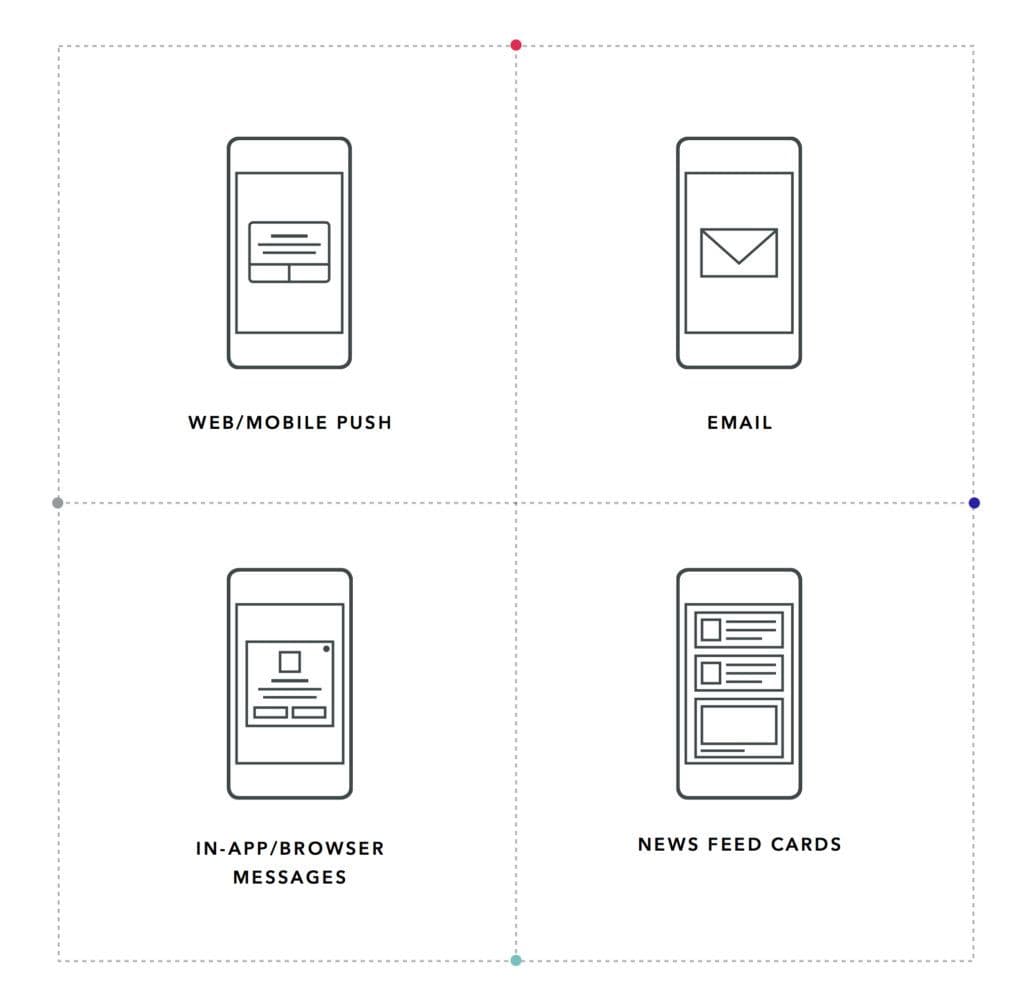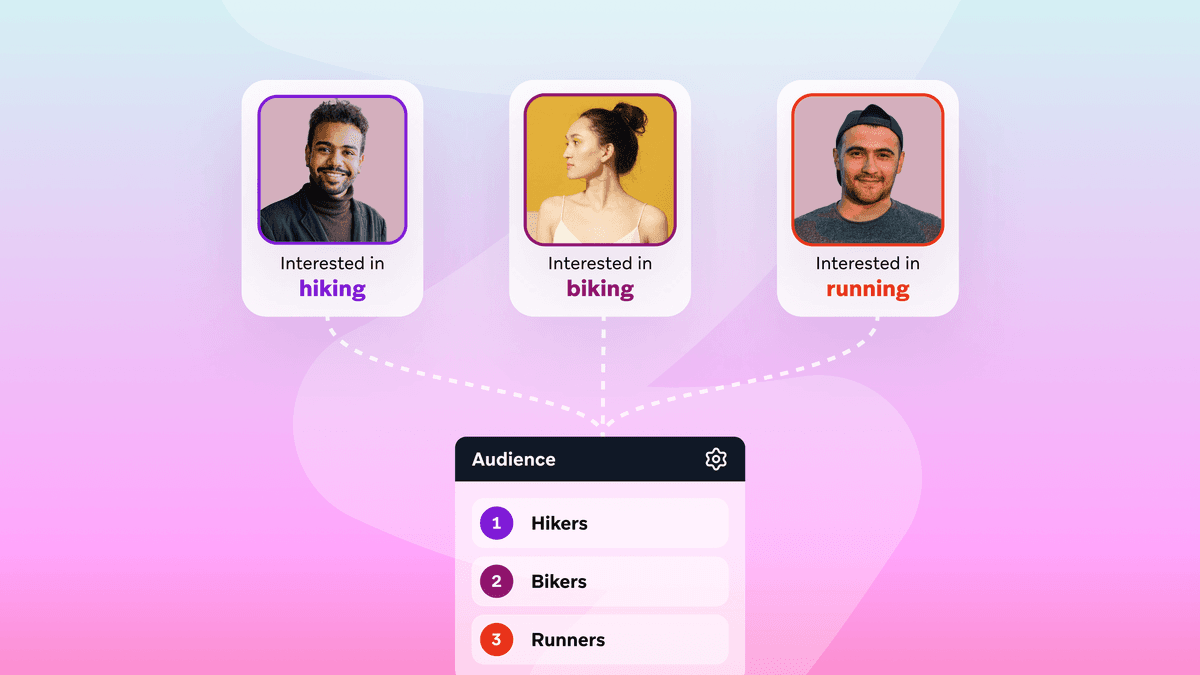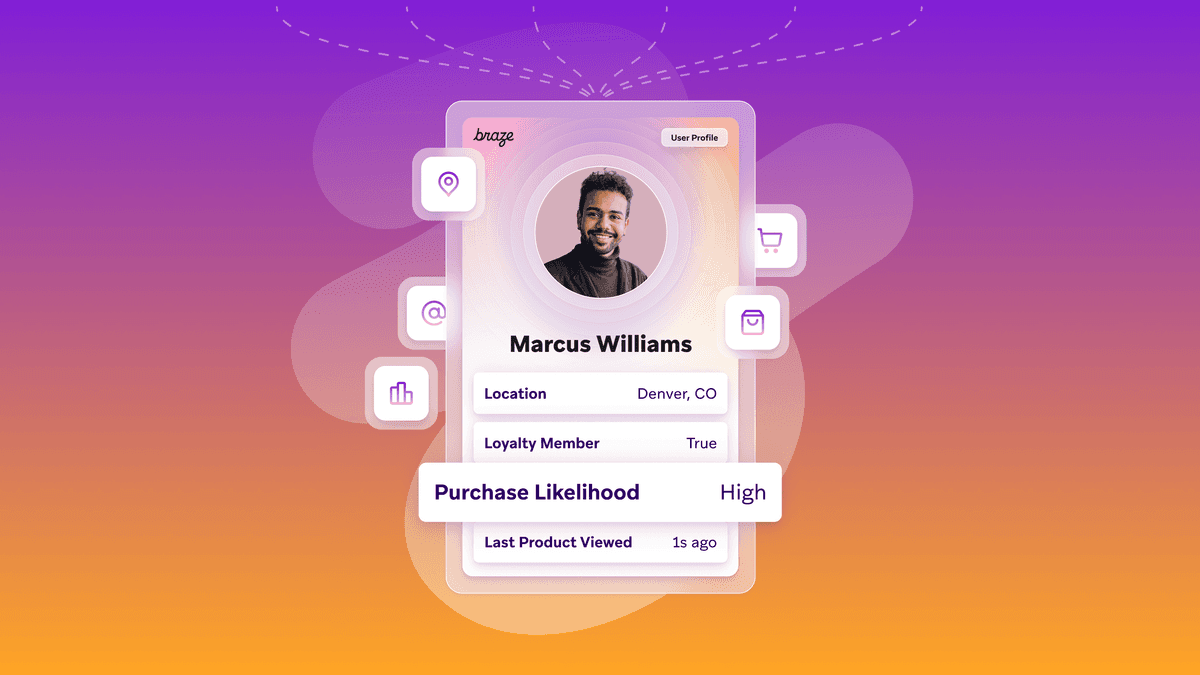Retention Marketing: What It Is, Why It Matters, and How To Get Started
Published on June 28, 2016/Last edited on June 28, 2016/11 min read


Todd Grennan
Managing Editor, Content Marketing at BrazeMarketing is in a transition period.
Over the last ten years, the rise of mobile has changed the marketing landscape by giving brands new ways to grow and engage with their audiences and allowing upstart firms to compete more effectively with established industry leaders on this new platform. As a result, we’ve found ourselves in something of a user acquisition gold rush. Brands spent vast sums of money to attract mobile app users, the cornerstone of an effort to ensure that they weren’t left behind as current and potential customers moved away from desktop and began to spend more and more time on mobile.
For a lot of brands, this kind of mobile acquisition marketing worked well. They survived the transition to mobile and took advantage of mobile install ads to continuously drive new customers to their apps. But over time, this sort of all-acquisition, all-the-time strategy has begun to show its age. Between March 2011 and March 2016, the cost of acquiring loyal app users more than tripled. And even as the number of apps installed on the average smartphone rose to 119, the number of apps that most people regularly use has declined, with the average user spending 80% of their mobile app time in their personal top three apps.
A single-minded focus on mobile app acquisition also fails to consider desktop and mobile web use, which is emerging as a major competitor to apps. The need to acquire new customers will never go away. But increasingly it’s taking a back seat to another kind of marketing, one that’s better suited to supporting the long-term engagement and monetization of a brand’s customers, on all platforms: retention marketing.
What is retention marketing?
Retention marketing is an approach to marketing that focuses not on gaining new customers for your brand, but on how you can market more effectively to your existing audience in order to drive high retention, deeper engagement, more consistent monetization, and better overall results for your business. A retention marketing strategy should include customer messaging designed to consistently engage users and demonstrate a brand’s value.
Why is retention marketing important?

User retention by day for iOS and Android Apps
A marketing strategy based entirely around acquisition is like filling a leaky bucket; real growth requires you to gain more new customers each month than the number of existing customers who disengage from your brand. With the cost of gaining a new loyal user painfully high and more than 75% of new mobile app users failing to return on the day after first use, only brands with endless financial resources can afford an acquisition-only strategy over the long haul.
That’s a problem. But retention marketing can be the solution.
Just as mobile gave brands new and effective ways to gain additional customers, it also provides powerful methods for engaging, retaining, and monetizing customers in the long-term. And retention marketing can be more lucrative than acquisition marketing, too. It’s 50% easier to convince an existing customer to make a purchase than to a new one, and a study from Bain found that a 5% increase in a brand’s customer retention can lead to a 75% increase in profitability.
Can retention marketing and acquisition marketing coexist?
They can—but more than that, they should.
Without some acquisition strategy, new brands have to depend entirely on organic means—such as word of mouth—in order to grow, which takes control of their future largely out of their marketing team’s hands. But if acquisition marketing isn’t paired with retention marketing, today’s new customers can quickly become tomorrow’s former customers.
How can brands prepare an effective retention marketing strategy?
Putting together a retention marketing strategy takes planning—you can’t just wake up one morning and go, hey, maybe I’ll retain more of my customers today. It’s a process, something that has to be supported by the right marketing tools and a real understanding of your audience and their wants and needs.
At its core, retention marketing is about strengthening the relationship between a brand and its customers by providing an experience that’s relevant and valuable to each one of them. That’s going to look somewhat different from industry to industry and from brand to brand, but the essential process will remain the same.
To get the most out of your retention marketing, it’s important to:
1. Get your data in order
Customer data is the lifeblood of retention marketing. Without it, marketers have no scalable way to understand their audience’s individual preferences and interactions with their brand—which makes it almost impossible to provide customers with a brand experience that caters to their personal needs and wants.
To fully execute a retention marketing strategy in today’s world, brands need to ensure that they’re collecting actionable information on their customers’ behavior, preferences, purchases, and more across every relevant platform. That means being thoughtful about tracking customer events and attributes and examining mobile audience data in concert with web and point-of-sale information, when possible, to get the most accurate picture of each user.
2. Be smart about your messaging channels
Direct customer messaging is a key part of engaging and retaining customers on mobile and beyond. Messaging makes it possible to keep users up to speed on new app features, let them know about relevant promotions and events, even warn them when they’re about to reach their credit limit.

But too many brands send all their customer outreach through a single channel, usually email or push notifications. To reach your audience more effectively, make use of those channels in concert with in-app messages and News Feed Cards: research carried out by Appboy (that is, us!) has found that multichannel onboarding campaigns, for instance, see two-month customer retention rates nearly twice as high as campaigns sent using push alone.
Don’t forget that there’s more to customer messaging than just mobile app channels. Web messaging channels like web push notifications and in-browser notifications are a powerful way to engage customers on desktop or the mobile web. If your brand has a significant web presence, consider taking advantage of these emerging channels—they can play a major part in supporting your larger retention marketing strategy.
3. Keep customers’ brand experiences personal
All the customer data in the world won’t help your marketing if you don’t make smart use of it. Effective retention marketing depends on customer data to provide each member of your audience with a positive brand experience that encourages them to stick around and keep engaging.

Personalizing messages with a customer’s name, location, preferences, and more makes for a more compelling, more valuable experience
To do that, marketers need to do a few things. Leverage their audience information to target each message to recipients whose preferences and behavior makes them likely to be interested in your outreach. Personalize messages to highlight products, services or other information that’s likely to resonate with the customer seeing them. And take advantage of send-time optimization to ensure that users receive the messages you send at times that they’re interested in being reached and are most likely to engage.
4. Be serious about testing
While messaging customers is an essential part of retaining them over the long haul, sending them an irrelevant messages—or contacting them too frequently—can sometimes have the opposite result, leading people to unsubscribe from your email list, opt out of push notifications, or uninstall your app. (In fact, 78% of consumers will opt out of push or uninstall if they get messages they’re unhappy with.)

Make sure you send the best version of each message by using multivariate testing to optimize your copy, color scheme, images, and more
Not every message will be your best. But you can improve your outreach message by message if your brand takes advantage of multivariate testing. This tool makes it possible to compare multiple message variants, allowing marketers to determine what copy (or image or sending frequency) best speaks to the people receiving each campaign, improving conversions and reducing the number of people who are driven away by messages they don’t like.
5. Keep a close eye on negative KPIs

Mobile retention rate is an essential metric for retention marketing—but it’s not the only thing you should keep an eye on
While there’s no question that a brand’s retention rate is the most important metric when it comes to retention marketing, there are other significant factors can help you tell if your strategy is on the right track. If, for instance, you find that your current approach is significantly driving up push opt-outs, or failing to move the needle on customer engagement, it may be time for a re-think. Retention marketing only works if your brand’s efforts encourage current customers to keep engaging—make sure you know whether or not that’s happening before large sections of your audience actually begin to drift away.
What kind of campaigns can marketers use to support their retention marketing efforts?
There’s no one “retention campaign” that brands should use to hold onto their audience. However, research has found that customers who engage consistently with a brand are more likely to stick around than customers who engage in an intermittent or occasional manner, with a 90% three-month retention rate for customers who engage weekly for the first month of app use.
Messaging is a powerful tool for nudging users to come back to your app or website, engage more seriously with your brand, and demonstrate the value that you can provide them. But fixating on any one kind of campaign is a recipe for messaging fatigue, which can reduce the impact of your outreach and even drive customers away. To avoid that, it’s important to craft a messaging strategy that makes use of different campaigns in concert to encourage regular engagement.
Here are some campaign types that you should consider sending:
- Onboarding campaigns: Educating your new users on how to use your app or website and how they can get the most out of your brand is one of the most effective ways to retain customers
- Transactional campaigns: While forgotten password and order confirmation messages aren’t the sexiest kind of outreach there is, these kinds of transactional campaigns play an essential role in providing value to customers, encouraging future engagement
- Promotional campaigns: Getting outreach about sales you don’t care about can be annoying, but a targeted, personalized message letting you know that a favorite product is on sale (or that a favorite band is playing a concert nearby) does more than drive a possible purchase; it does recipients a solid by letting them know
- Activity messaging campaigns: If your app or website has a social element, using messaging to let customers know about their friend’s activity or other social interactions gives them an ongoing set of compelling reasons to engage with your brand
- Retargeting campaigns: When customers fail to engage with a message you send them, retargeting lets you follow up through different messaging channels, increasing the chances that they engage with your outreach and giving you a clearer picture of what messaging channels they prefer to be contacted through
- Active customer campaigns: While it’s tempting to declare victory once a customer has begun engaging consistently with your brand, long-term retention requires maintenance; with active customer campaigns, you can build on that engagement by using exclusive discounts, loyalty rewards, and other incentives to nudge active customers to engage more deeply
- Lapsing customer campaigns: For customers who are beginning to disengage, targeted messaging that highlights the value of your brand to them as individuals is a great way to get them to start engaging again
- Re-engagement campaigns: While not every customer who stop using your app or visiting your web site can be won back, a well-designed re-engagement campaign can boost retention by encouraging persuadable lapsed customers to return using discounts or by demonstrating your brand’s value
- Re-permissioning campaigns: It’s harder to reach with customers who have opted out of one or more messaging channels, making this kind of campaign (which uses alternate channels to encourage customers to change their mind and opt in for push or email) a valuable tool for improving the brand/customer communication that supports retention marketing
Final thoughts
Successful retention marketing requires brands to understand their customers—their preferences, their habits, their in-app and web browsing behavior—and to use that insight and the marketing tools at their disposal to provide value to their audience. Prove your brand’s value and you increase your opportunities for engagement and future monetization while building a larger, more involved, more loyal customer base.
Want to dig deeper into the fundamentals of retention marketing? Start here:
- Ensure that you know How To Inspire Consistent Engagement (and Boost Retention, Too) and how to Be Your Customers’ Ritual: Consistent Engagement Results in 90% Audience
- Learn 10 Ways to Make Your App a Retention Machine
- Bone up on QuizUp’s Foolproof Framework for Driving User Retention
- Find out how Multichannel Messaging Can Increase Customer Retention by 130%
- Discover how to Keep Customers Reading (and Watching and Listening) With Personalized Messaging
- Review The Ultimate Guide to Mobile Engagement
- Study up on Retention Lessons From SoundCloud
- Make sure you know How To Market a Mobile App: Getting New Users—and Keeping Them!
- Less Than 25% of New App Users Return the Day After First Use, so make sure you have a plan to improve on those numbers
Related Tags
Be Absolutely Engaging.™
Sign up for regular updates from Braze.




